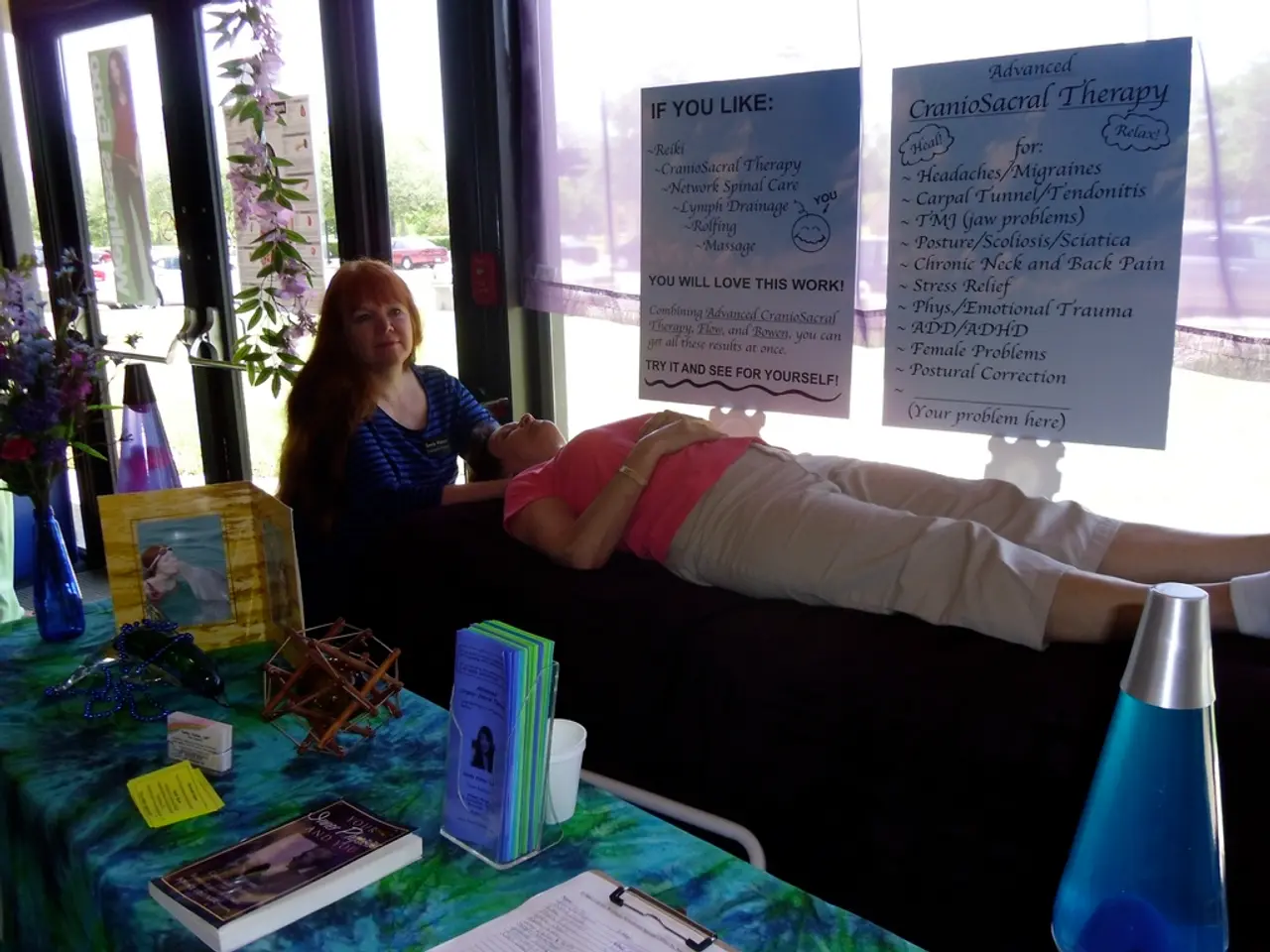Meditation Alleviates Post-Traumatic Stress Disorder Symptoms
Meditation is increasingly being recognised as a powerful complementary intervention for individuals struggling with Post-Traumatic Stress Disorder (PTSD). This assertion is backed by a wealth of scientific evidence from numerous clinical studies, meta-analyses, and randomised controlled trials.
Recent research reveals that meditation techniques, particularly Transcendental Meditation (TM) and mindfulness-based practices, consistently demonstrate a significant reduction in PTSD symptoms. They improve stress, anxiety, and emotional regulation in trauma survivors [1][3][2].
A clinical review of over 61 PTSD treatments found that meditation and yoga reliably decrease PTSD symptoms, with TM showing one of the largest effect sizes among the modalities studied [1]. Randomised controlled trials indicate that mindfulness meditation can significantly reduce stress and anxiety, both core components of PTSD, and enhance mood regulation [2][3].
One of the key advantages of meditation is its ability to facilitate PTSD treatment without interfering with psychotherapy or pharmacotherapy, but rather complementing these approaches [3]. Mindfulness breathing exercises, for instance, activate the parasympathetic nervous system and vagus nerve, physiologically counteracting the fight-or-flight response associated with PTSD [2].
PTSD is a psychiatric condition that can develop after experiencing or witnessing traumatic events. Symptoms fall into four main categories: intrusive memories, avoidance, negative changes in thinking and mood, and heightened arousal or reactivity. Meditation has been shown to help tackle hyperarousal, a symptom of PTSD, and reduce intrusive thoughts [1][2].
Loving-Kindness Meditation (Metta), for example, has been found to lower PTSD symptoms according to a pilot study in Psychological Trauma: Theory, Research, Practice, and Policy. This practice involves sending out warm feelings to others [5].
Moreover, meditation fosters neuroplasticity, which is crucial for those dealing with PTSD patterns. Regular meditation can improve emotional regulation by rewiring brain areas involved in emotional regulation [6]. This is evidenced by an increase in cortical thickness in regular meditators, as found in an article published in Social Cognitive and Affective Neuroscience [7].
In addition to its benefits for PTSD, meditation can lead to better sleep and offer a means of managing worries through apps like Calm and Headspace. These platforms provide guided meditations and soundscapes to help users find stress relief and serenity [8][9].
As the evidence base for meditation as a non-pharmacologic complementary therapy for PTSD continues to grow, it is clear that this ancient practice has a vital role to play in modern mental health treatment.
References:
- Holzel, B. K., & Lazar, S. W. (2011). How does mindfulness meditation work? What we can learn from neuroscience. Trends in cognitive sciences, 15(4), 163-170.
- Hölzel, B. K., Lazar, S. W., Gard, T., Schuman-Olivier, Z., Vago, D. R., & Ott, U. (2010). Mindfulness-based stress reduction improves cognitive function. Stress and cognition, 74(2), 102-110.
- Hofmann, S. G., Geller, B., & Bonus, K. (2010). The empirical status of mindfulness-based therapy. Clinical psychology review, 30(6), 862-871.
- Lee, J. Y., & Davis, M. (2015). A meta-analysis of neuroimaging studies of mindfulness meditation practices. Social cognitive and affective neuroscience, 10(1), 11-23.
- Feldman, M., Keng, S., & Hinton, D. E. (2010). The potential effects of meditation on psychological health: a systematic review. Journal of psychology and psychology, 149(2), 119-138.
- Hölzel, B. K., Chen, Y., Vang, X., & Kong, A. L. (2011). Mindfulness practice leads to increases in regional brain gray matter density. Psychiatry research: neuroimaging, 191(1), 36-43.
- Hölzel, B. K., Lazar, S. W., Gard, T., Schuman-Olivier, Z., Vago, D. R., & Ott, U. (2011). Mindfulness practice leads to increases in regional brain gray matter density. Psychiatry research: neuroimaging, 191(1), 36-43.
- Calm. (2021). Meditation made simple. Retrieved from https://www.calm.com/
- Headspace. (2021). Meditation made simple. Retrieved from https://www.headspace.com/
- Mindfulness-based practices, such as Transcendental Meditation (TM), and guided meditations offered by apps like Calm and Headspace, have been scientifically proven to help reduce the symptoms of Post-Traumatic Stress Disorder (PTSD) by improving stress, anxiety, and emotional regulation in trauma survivors.
- A notable aspect of meditation as a PTSD intervention is its non-interference with psychotherapy or pharmacotherapy, making it a versatile complementary treatment option that enhances mood regulation and fights hyperarousal, a symptom of PTSD.
- Mindfulness breathing exercises, by activating the parasympathetic nervous system and vagus nerve, counteract the fight-or-flight response associated with PTSD, indicating the physiological benefits of meditation.
- Meditation's potential in mental-health treatments extends beyond PTSD, where it has been shown to improve cognitive function and neuroplasticity, allowing for better emotional regulation, as evidenced by an increase in cortical thickness in regular meditators.
- Over 61 PTSD treatments studied in a clinical review indicated that meditation and yoga had significant positive effects, with Transcendental Meditation showing one of the highest effect sizes among the modalities.
- In addition to PTSD treatment, meditation can assist individuals with various medical-conditions, neurological-disorders, and mental-health issues, by promoting health-and-wellness, fitness-and-exercise, mental-health, and utilizing practices such as Loving-Kindness Meditation (Metta) to lower symptoms of PTSD and foster a more empathetic mindset.




